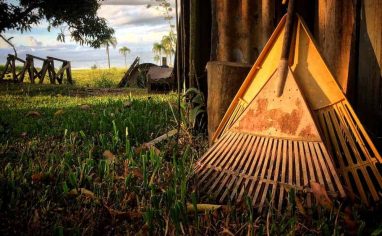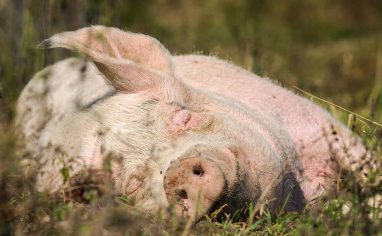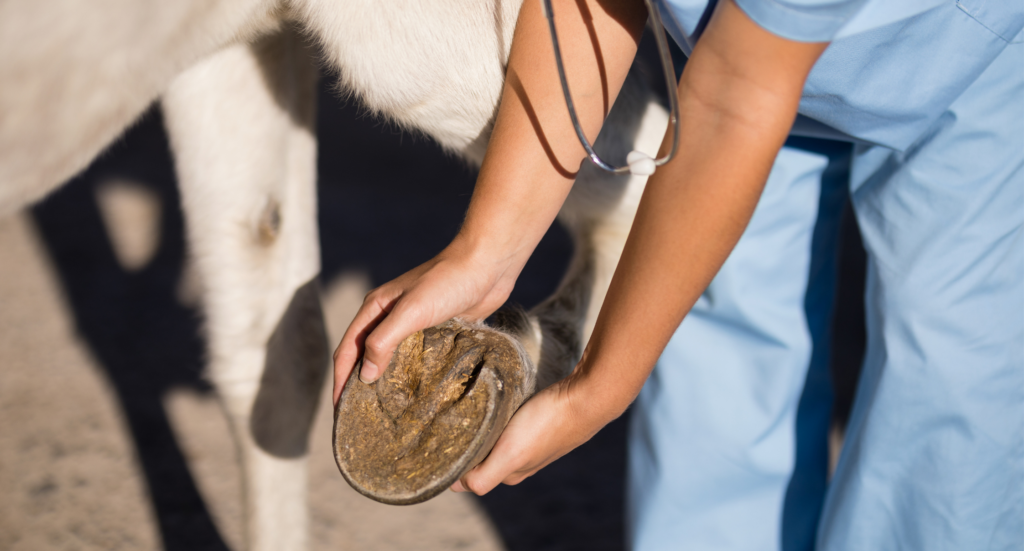

Veterinary Review Initiative
This resource has been reviewed for accuracy and clarity by a qualified Doctor of Veterinary Medicine with farmed animal sanctuaryAn animal sanctuary that primarily cares for rescued animals that were farmed by humans. experience as of April 2025. Check out more information on our Veterinary Review Initiative here!
If you provide care for equines or are considering providing sanctuary in the future, it is important to learn about common injuries and illnesses that affect equine hooves. This resource will cover the general signs, causes, and preventative measures of hoof abscesses in equines. It will also discuss how veterinarians make a diagnosis and general treatment plans. You may already know that hoof abscesses are a significant concern when considering the health of equine residents, and even have some experience caring for an individual with a hoof abscess. But if you could use some freshening up on the topic (or you don’t have experience), this resource is for you! Let’s get started!
Abscesses In Equines
An abscess occurs when white blood cells accumulate in response to a foreign body or infection, forming pus, and the body walls off the area with other cells. Abscesses can occur anywhere in a horse’s body, including the internal organs. The most common forms of abscesses found in equines are:
- Hoof abscesses
- Strangles-related abscesses
- Pigeon fever-related abscesses
- Tooth root abscesses
While this resource covers hoof abscesses specifically, it is helpful to learn more about other types of abscesses and common health concerns you may encounter with your equine residents. You can find more information in our resource, “Potential Health Issues In Horses“ and “Potential Health Issues In Donkeys”. We also have a resource, “An Introduction To Equine Dental Health,” to help you care for your resident’s dental health and prevent tooth abscesses when possible.
Injuries are the most common cause of hoof abscesses. They are often caused by something sharp puncturing the sole, creating a crack or hole, allowing bacteria to enter. When this happens, the infection can grow into the deep tissues, causing lameness, so it is important to treat it quickly to prevent complications. Hoof abscesses cause significant discomfort and pain; a veterinarian should be consulted immediately for a proper diagnosis and treatment.
In other cases, environmental factors, lack of proper hoof care, and certain health conditions can be causes or predisposing factors. As a sanctuary, you may rescue equines whose hooves have been poorly cared for or have nutritional deficiencies. Doing a thorough health check and working with an experienced veterinarian and farrierSomeone who provides hoof trimming and care, especially for horses or cows for a hoof care plan is vital. Let’s look further into the causes and risk factors of hoof abscesses.
Causes And Risk Factors
As mentioned above, hoof abscesses arise when bacteria enter the hoof through a crack or puncture wound. Equines with thin soles are more vulnerable to injuries. Bacteria may also enter the hoof if the white line is diseased. This is sometimes called “seedy toe.” Cracks in the hoof wall, regardless of the cause, also allow bacteria to enter and cause abscesses.
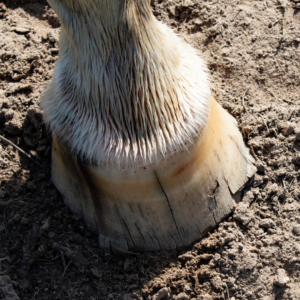
Any equine can get a hoof abscess. While stepping on sharp rocks, nails, or other objects can cause an abscess, horseshoes also carry their own risk. For shod horses, a misplaced nail into a specific part of the white line or sensitive laminae can also lead to abscesses. You may hear a farrier or veterinarian refer to this as “a hot nail”. For this reason, it is important to ensure your farrier is experienced. For some equine residents, shoeing may be beneficial, depending on several factors, but for others, it may not be necessary, and doing so may increase their risk of abscesses. For more information, read our resource “To Shoe Or Not To Shoe: Exploring Options For Equine Residents.” Now, let’s look at a list of risk factors that can increase the likelihood of an equine resident developing a hoof abscess:
- Thin Soles: Equines with thin soles are more prone to injury.
- Disease: Residents with diseases like Cushing’s disease and white line disease are vulnerable to recurrent hoof abscesses.
- Laminitis: Chronic laminitis often weakens the hoof structure, causing a porous white line. When this happens, bacteria can enter and cause an abscess.
- Poor Hoof Care: Without regular trimming, hooves can become overgrown, stretching the white line and making the hoof vulnerable to bacteria. Unskilled hoof trims can also lead to a host of issues, including abscesses.
- Genetics: Genetics isn’t a direct cause of hoof abscesses, but can be the reason for poor hoof health for some individuals.
- Poor Nutrition: Mineral and vitamin deficiencies can lead to weak, brittle hooves or other issues, making the individual vulnerable.
- Climate: Wet climates can soften hooves and allow bacteria to proliferate, while extremely dry weather can lead to cracks that allow bacteria to enter the hoof. Going from dry, hot weather to wet weather puts residents at particular risk.
- Terrain: Rocky terrain or living spaces that have not been properly cleared of debris or metal bits like screws or nails, is a definite risk factor.
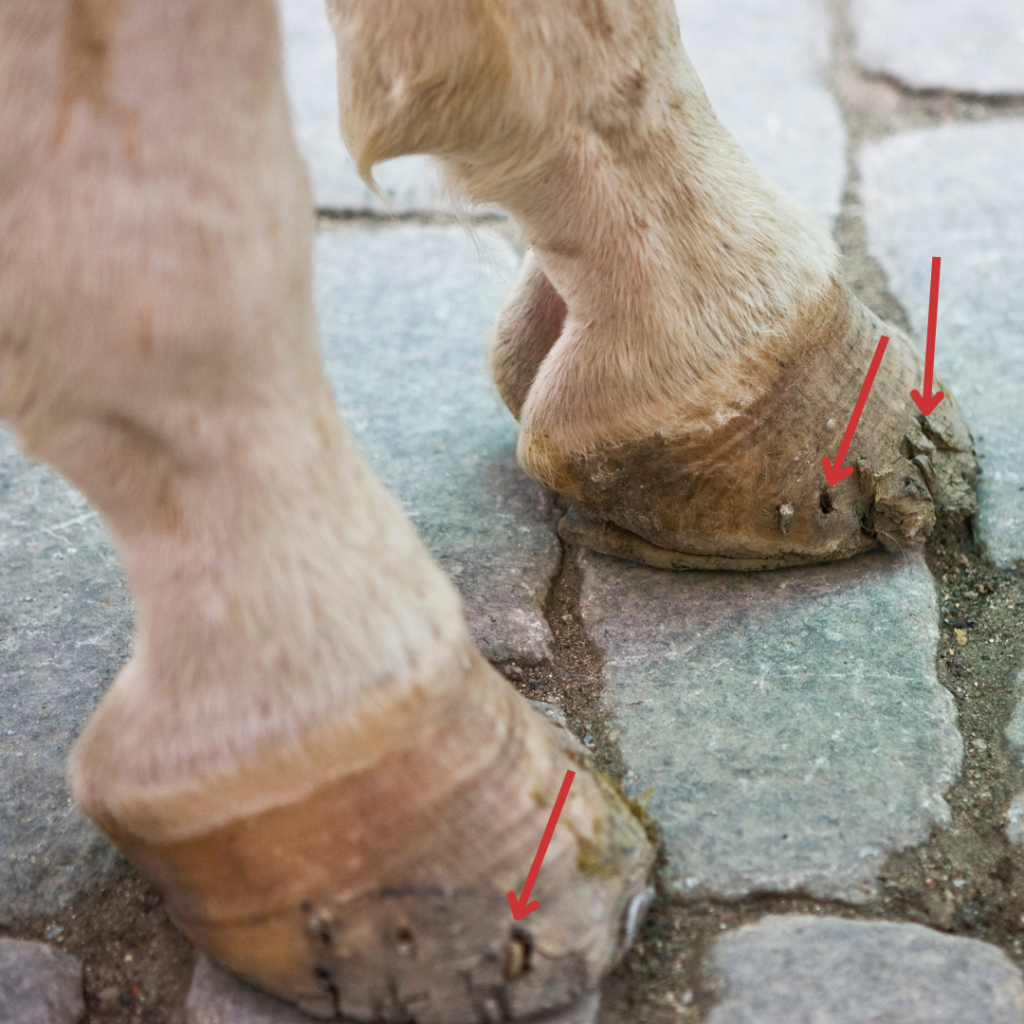
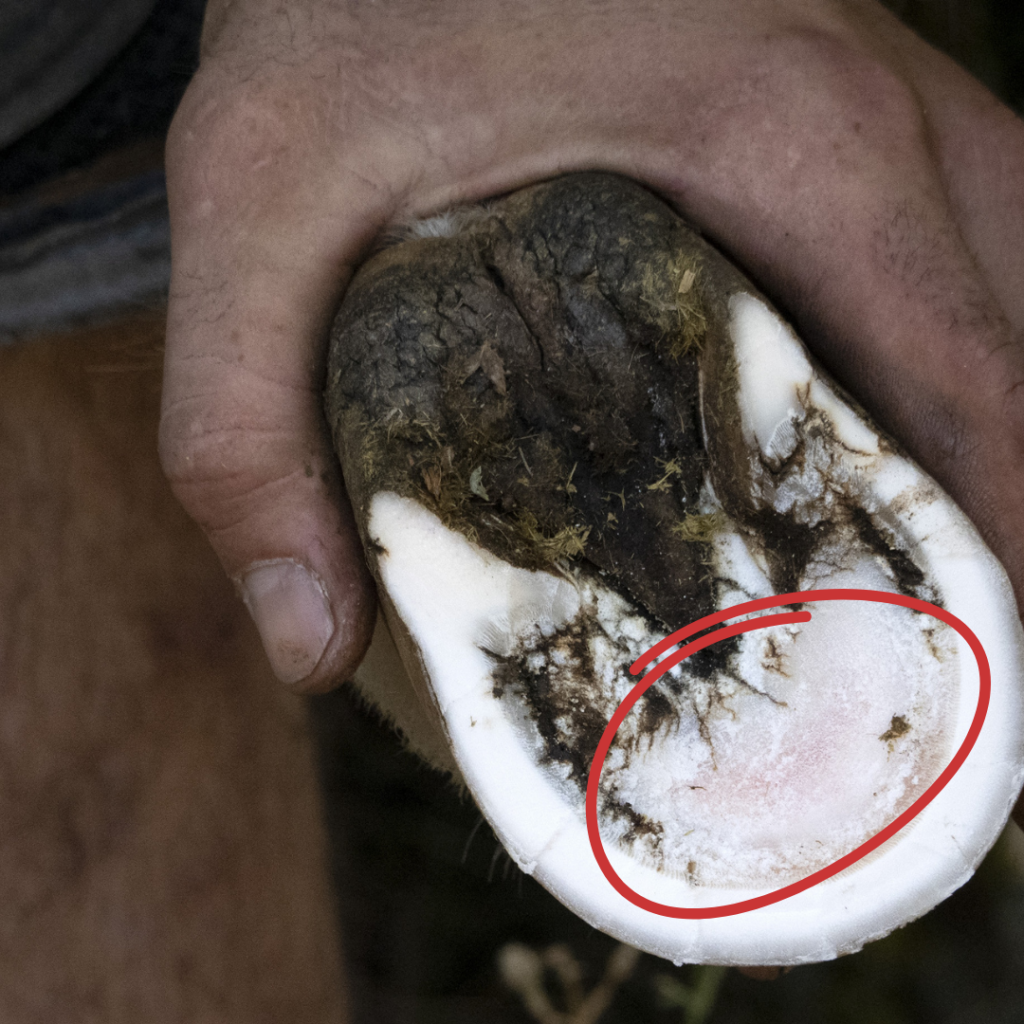
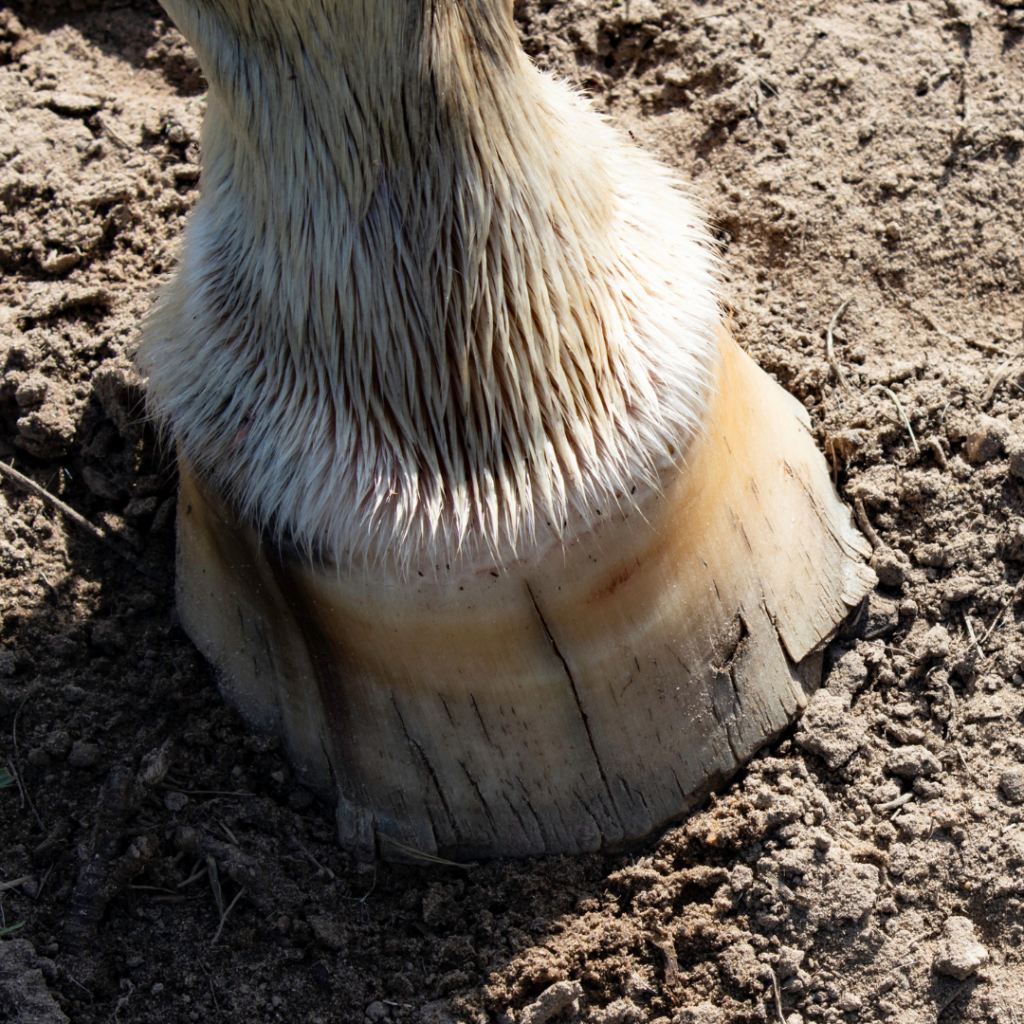
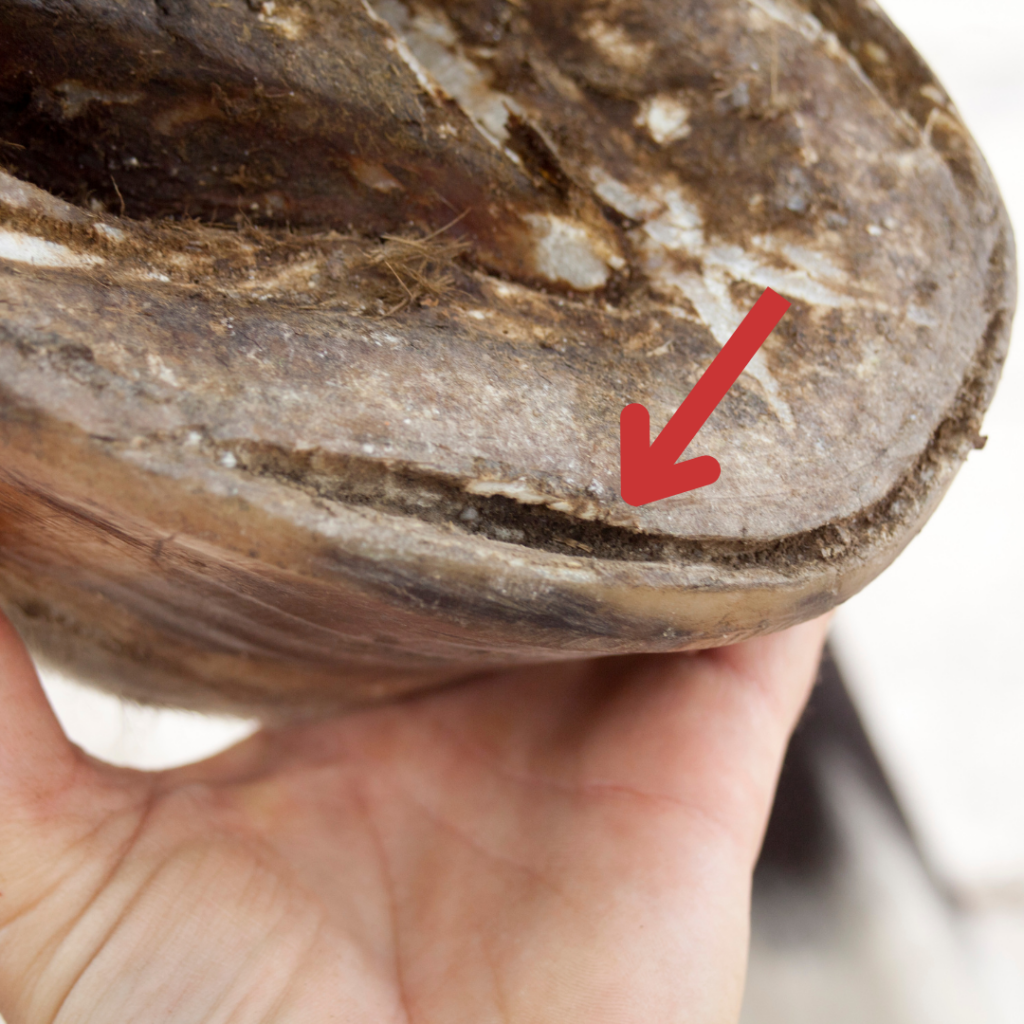
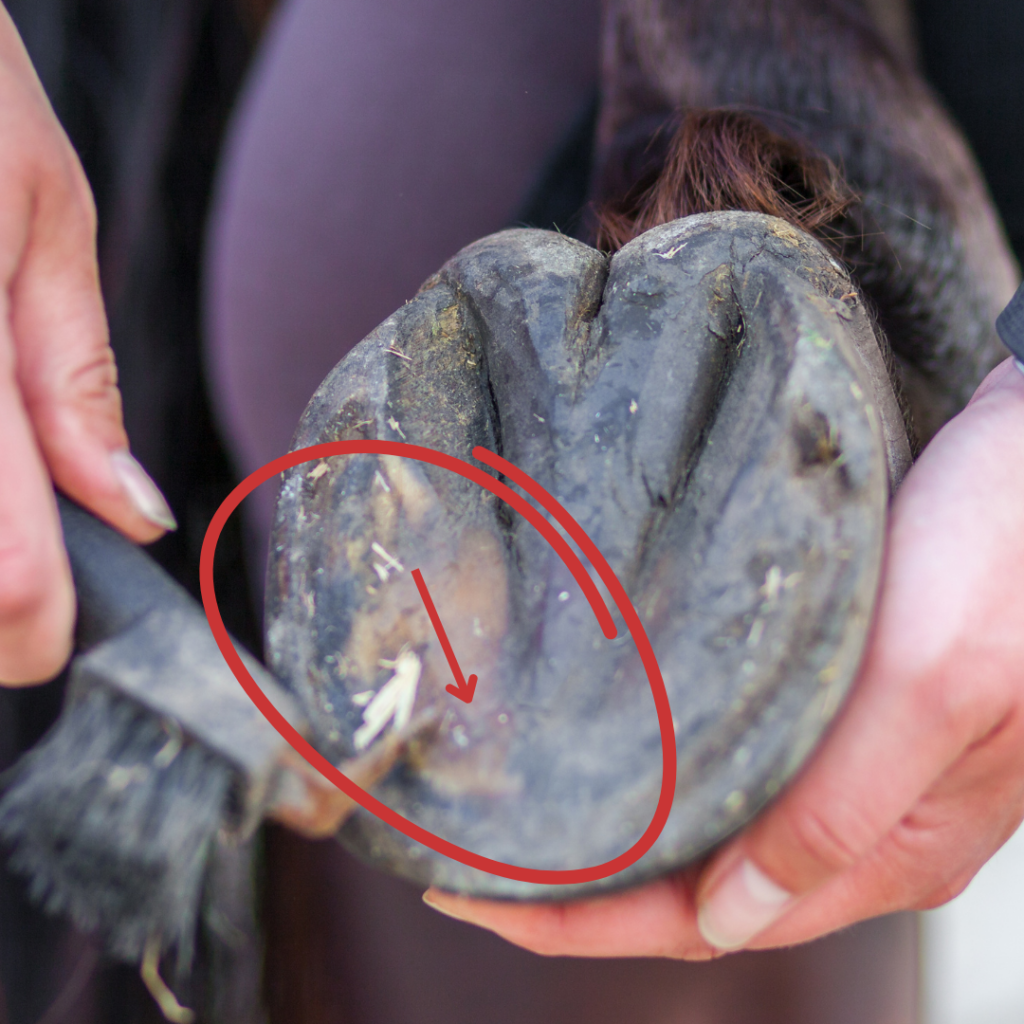



Assessing a resident’s hoof health should be done upon intake or before, when possible. While performing a full health check as a caregiverSomeone who provides daily care, specifically for animal residents at an animal sanctuary, shelter, or rescue. is important, you must have an experienced farrier and equine veterinarian examine a resident’s hooves and create a hoof care plan specifically for the individual’s needs. An experienced equine nutritionist can also be helpful when preparing health and care plans for equine residents. So, we’ve covered causes and risk factors, but what should you look out for when it comes to hoof abscesses? Let’s find out!
Signs
If an equine resident has a hoof abscess, there will be signs. It is important to remember that donkeys are less likely to show signs of pain or illness. By the time you notice obvious signs of pain or discomfort, it may have been around for a while. Careful attention must be paid to donkey residents to ensure an issue is not going unnoticed. However, certain horse breeds may be more likely than others to show signs of pain or illness, which can also vary among individuals. That being said, here is a list of signs to watch out for:
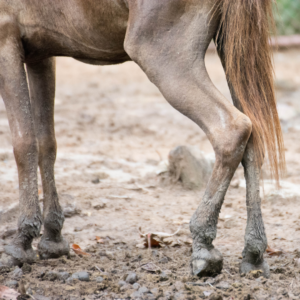
- Sudden lameness
- Reluctance to step on a particular hoof or hooves
- Standing in a “sawhorse” stance. This presents as an individual standing with their front legs pushed out in front of them. Generally, their back legs will be under their body (like a dog stretching), but it can vary depending on the individual’s body and abilities.
- Swollen lower leg
- Hot lower leg
- Elevated temperature
- Loss of appetite
- Open wounds, blood, or pus
- Strong, rapid digital pulse in the pastern or possibly towards the back of the fetlock
- Change in energy and/or routine. For example, does Dune usually accompany the rest of the group far out into the pasture, but lately stays closer while the rest of the herd moves out further? Maybe walking is uncomfortable. Better check him out!
- Agitation, irritability, or personality changes
Spotting signs of illness, injury, social and personality changes, and other behavioral changes is an essential aspect of caregiving. Below is a list of resources discussing observation as a caregiving tool and how to develop your observation skills. We recommend these resources for all caregivers!
Observation: An Important Caregiving Tool
The Open Sanctuary Podcast: The Importance Of Observation In Animal Caregiving
The Caregiver’s Guide To Developing Your Observation Skills
Observing And Recording Resident Behavior
The Open Sanctuary Project’s Resident Ongoing Treatment & Observation Record
Diagnosis
If you suspect a resident has a hoof abscess, it is important to contact your veterinarian right away. In addition to the discomfort and pain the individual is experiencing, there can be more serious health issues at play, such as laminitis, coffin bone fracture, tendon injuries, and more. These health concerns can have symptoms similar to hoof abscesses and require immediate veterinary intervention. In some cases, you may only notice an abscess once it has burst. In these cases, it is still a good idea to call your veterinarian. So much is dependent on the individual, as well as environmental, physiological, and other health factors, so it is always important to have a conversation with your vet about diagnosis and treatment plans.
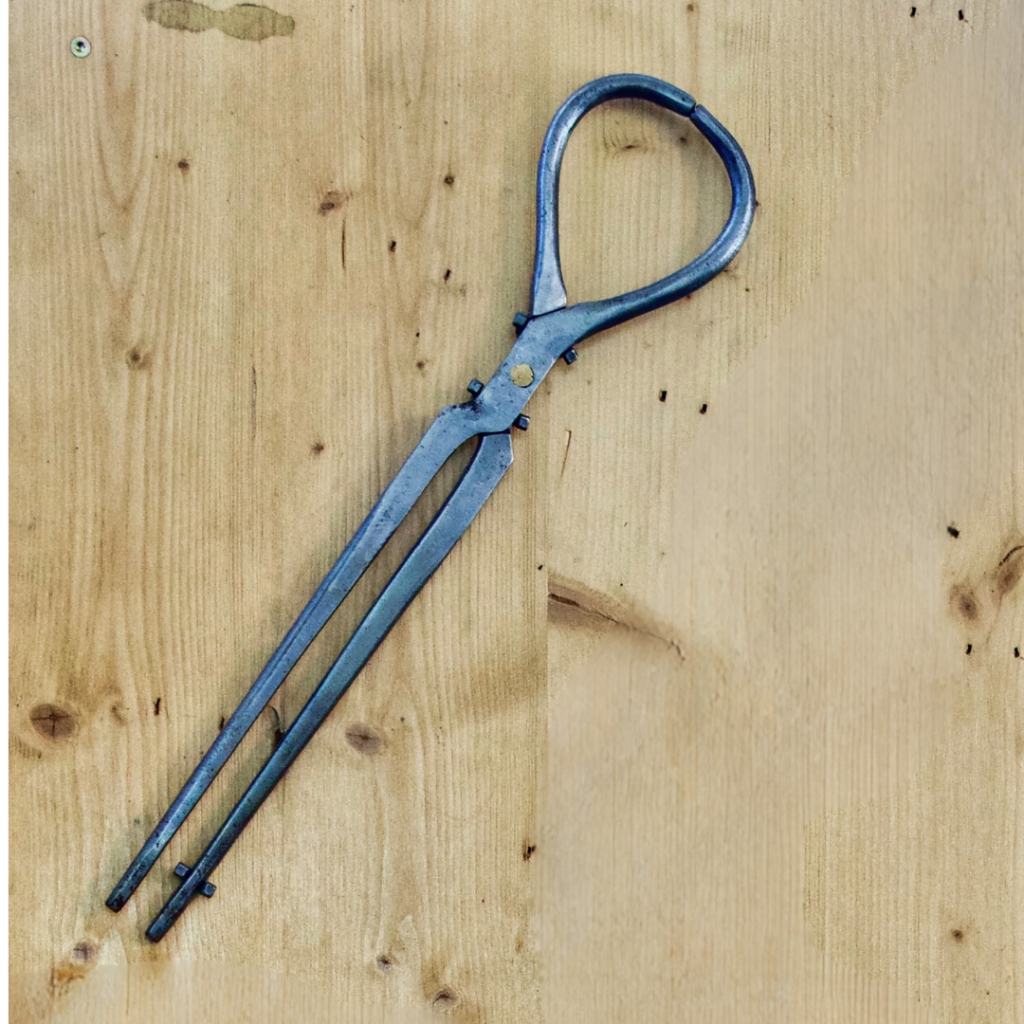
When seeking a diagnosis, a veterinarian will perform a physical exam to check for a higher pulse rate and heat from inflammation in the area and examine the heel bulbs and coronary band. They will press and manipulate the heel bulbs and coronary band and examine the sole of the hoof for signs of bruising or injury. Hoof testers are often employed to ascertain an individual’s response to pressure exerted on certain areas of the hoof. If the individual reacts strongly by pulling their hoof away, that generally indicates pain and discomfort in that area. Sometimes, the abscess is on the verge of bursting and is fairly easy to locate. Other times, it can be more challenging.
Your vet will look for discoloration or damage and look at the white line for any sign of separation of the hoof wall that may have allowed bacteria in. An experienced farrier or veterinarian may use a hoof knife to lightly pare the hoof to reveal any signs of bruising or injury. Spots of discoloration can indicate bruising or an abscess, and an ideal drainage tract. Once found, they can lance the abscess. However, there are times when it is still difficult to diagnose. A veterinarian may use nerve blocks to assess where the pain originates from or recommend a poultice for a day or two to soften the tissue and make it easier for the abscess to burst. However, if this doesn’t work, they may suggest x-rays or thermography to look for pockets of infection.
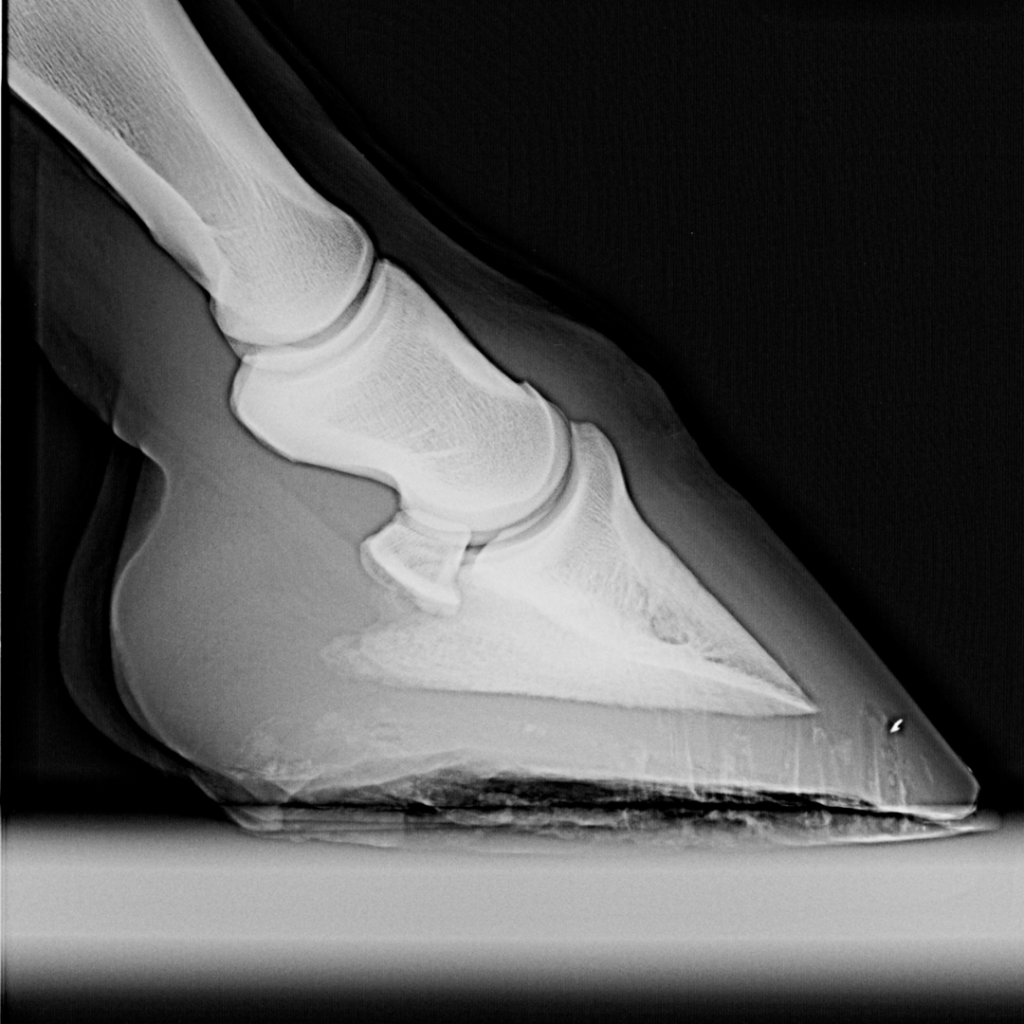
Coronary Band Abscess Video
Below is an example of an abscess rupturing through the coronary band and how deep within the hoof abscesses can fester. The following video shows a horse dealing with an abscess in the sole of their hoof. While these resources provide helpful visual information, they should not be taken as the proper way to handle abscesses, as this information should come directly from an experienced veterinarian and farrier working directly with your equine residents.
Call Your Veterinarian!
As part of a thorough introduction to hoof abscesses, we felt it beneficial to include the following videos. We are not veterinarians, nor are we farriersIndividuals who provide hoof and trimming care, especially for horses or cows.. Do not use the following videos to “self-train” and attempt to treat any resident. Doing so can cause irreparable damage to the hoof, significantly impacting the equine’s well-being. Always consult with a veterinarian and an experienced farrier.
Sole Abscess Video
Below is an example of an abscess that ruptures and drains through the sole of the hoof. These generally heal faster than those that rupture at the coronary band or hoof bulbs. As you can see in this video, it didn’t take much paring to find the abscess and widen the hole. In simple cases, this is often enough to drain the abscess and relieve pressure. In the video above, the abscess had been festering for some time and ran from the sole of the hoof to the coronary band, where it ruptured. Much more hoof wall and sole was removed due to the size and damage the abscess had caused. While removing less is generally considered more when referring to hoof abscesses, we cannot speak to the case above. However, the abscess was more complicated than the simple sub-solar abscess seen below, and each case is different.
We Do Not Endorse
Just because we cite a source, please do not consider this an endorsement of the source by The Open Sanctuary Project (in the same way that we do not endorse any animal organization or individual animal advocate). In addition, the citation of one page of a website does not mean we endorse practices or policies written about elsewhere on the same website, or even necessarily practices or policies that appear on the same page! We try our best to cite exactly what we’re talking about in a resource, which sometimes means finding one important piece of information rather than finding a source that entirely aligns with our missionThe stated goals and activities of an organization. An animal sanctuary’s mission is commonly focused on objectives such as animal rescue and public advocacy. (which would be nearly impossible in today’s world when it comes to many of our resources).
Please see our resource, “Information Sourcing Considerations At The Open Sanctuary Project,” for more information.
Treatment
Treatment may vary depending on the severity and location of the abscess. This is especially true depending on whether the abscess is draining or has yet to burst. The main goal of treatment is to facilitate the drainage of the abscess and relieve pain while ensuring there isn’t another underlying condition. Your veterinarian or trusted farrier working with your veterinarian will seek to identify the location of the abscess, ensure it is draining, likely soak the hoof, and apply a poultice. They may also recommend pain management with NSAIDS, depending on the severity of the abscess and the resident’s symptoms. Antibiotics are not generally necessary or recommended for hoof abscesses, as they can even prolong healing. Of course, there may be exceptions in certain cases.
It is best if the abscess drains from the sole of the hoof, not the coronary band, but, depending on where the abscess is located, sometimes that can’t be helped. If there isn’t an apparent spot on the hoof or sole of the hoof, paring away some of the sole can often reveal where it is. Don’t be overzealous! Digging deep can slow healing, cause bleeding, and even worsen the infection. Only pare the sole if your hoof care team (veterinarian and farrier) tells you and has trained you to do this. If it isn’t readily apparent after superficial paring of the sole, stop and let your veterinarian and farrier handle it.
Your veterinarian may use a pointed tool to rupture and drain the abscess. A small hole should provide the space required for a hoof abscess to drain adequately. As the individual stands and puts pressure on the hoof, more contents will drain out. This generally provides immediate relief to the individual. Unfortunately, it isn’t always easy to find the tract or abscess. In that case, more diagnostics are used, such as a thermography camera or x-rays.
Once the drainage tract is found, your vet may advise you to soak the hoof in warm water with Epsom salts daily or at a different frequency. Buckets may be used, though soaking boots and bags may be your veterinarian’s preference. They will let you know what is considered best in this situation. Soaking draws out more of the infection from the abscess. Alternatively, your veterinarian may suggest making an Epsom salt poultice and wrapping it with a bandage. Be sure to have your veterinarian show you how they would like you to do this, since you’ll likely be the one changing bandages.
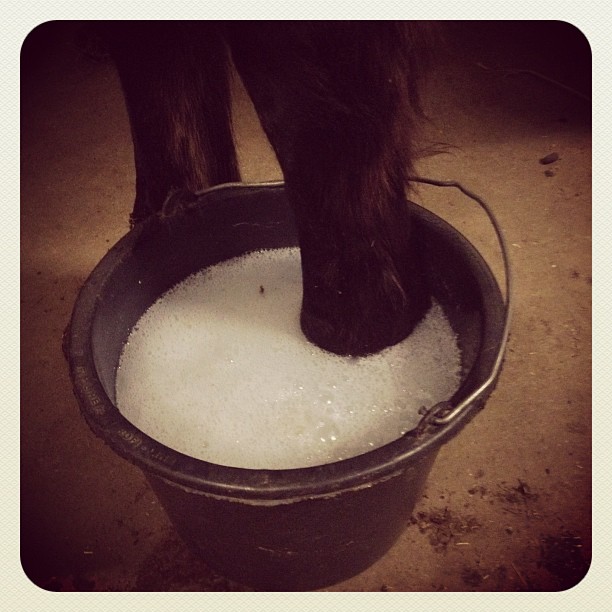
Veterinarians may have varying preferences in the materials and methods used to make and secure a poultice. It is common practice for the poultice to be secured by duck tape or gorilla tape covering the hoof or secured by a special boot. Waterproofing is important. Your veterinarian may recommend keeping tools on hand to deal with hoof abscesses. This tool kit could likely contain a clean water bucket, pound cotton, vet wrap, duck tape or gorilla tape, utility scissors, and Epsom salt. Some may recommend keeping a pack of disposable diapers around to wrap a hoof in a pinch.
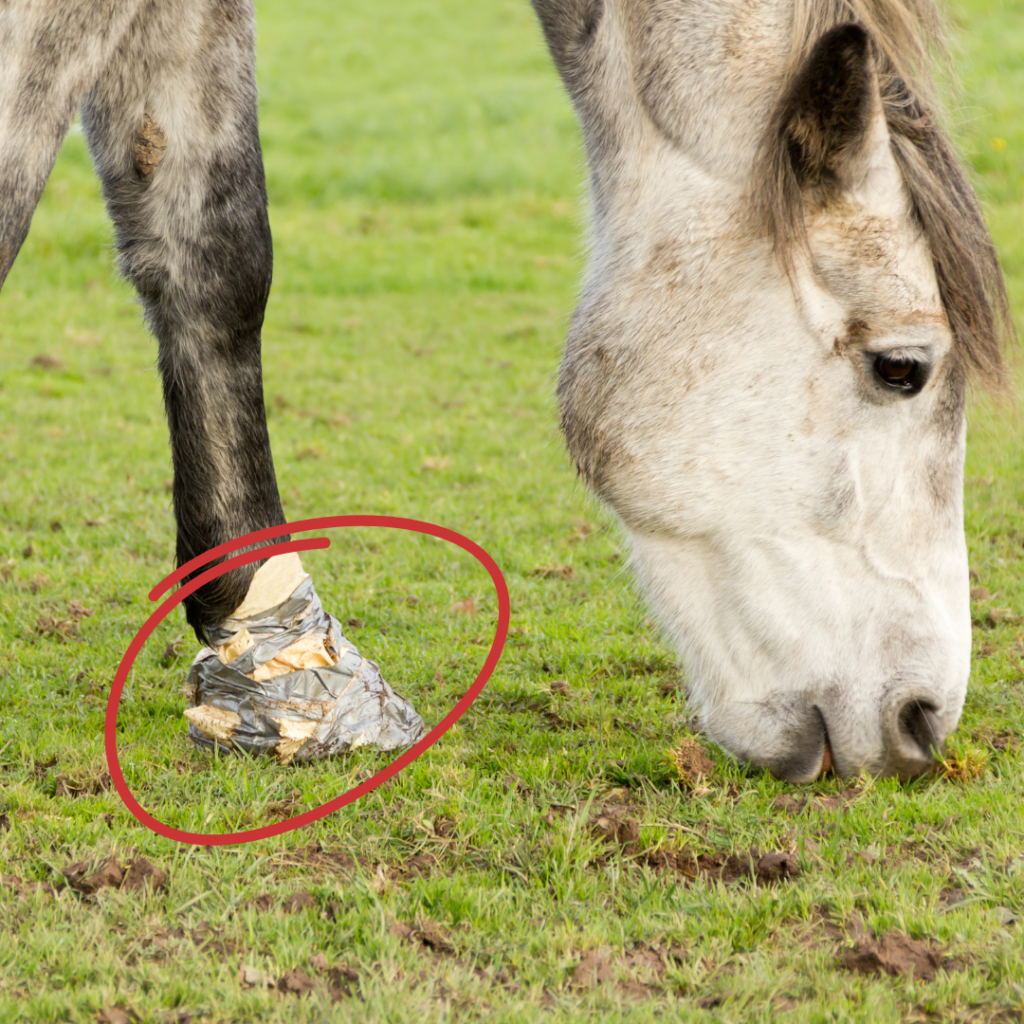
Always remember not to wrap it too tightly. This can restrict blood flow and movement. Using an Epsom salt poultice instead of prolonged soaks can be especially helpful in the winter when the temperatures are too cold for long hoof soaks. You may be tasked with soaking the affected hoof daily, though this may vary from case to case. During treatment, provide the resident with limited living space, ensuring food and water are close so they don’t have to make long trips to access resources while they heal. You want them to move about but not struggle to meet their needs. In addition to this, NSAIDs and a tetanus booster may be recommended.
Equine Tetanus Vaccination
Tetanus is a concern for all equines, regardless of region. Tetanus is a serious health concern for both humans and nonhuman animals. (It is a good idea for caregivers to have a tetanus vaccination.) It is contracted through wounds that allow spores of Clostridium tetani to invade. Along with other recommended vaccinations, equine residents should receive an annual tetanus vaccination after their initial two-dose vaccination. The schedule of tetanus vaccinations is more exact for pregnant equines and foals. Speak with your veterinarian about tetanus and other vaccinations they may recommend for your equine residents.
Health Complications
While many hoof abscesses are relatively straightforward, complex cases do occur and can cause more serious health issues. Some abscesses may rupture out of the coronary band or heel bulb, and both take longer to heal, leaving individuals vulnerable to infections such as cellulitis that can travel up the leg of the affected hoof. There are also cases where the coffin bone becomes infected, a very serious matter.
If you have a resident who gets recurring hoof abscesses, it is important to follow up with your veterinarian and ask about possible underlying medical conditions that may be contributing factors. To reduce the risk of complications, act quickly and consult a veterinarian as soon as possible if you suspect a resident has a hoof abscess.
Prevention
While you can’t ensure equine residents never develop hoof abscesses, there are steps you can take to lower the risk. Understanding how the environment, nutrition, and hoof trims affect a resident equine’s hooves goes a long way in preventing hoof abscess. Honing your observation skills and performing regular health checks help keep residents happy and healthy. Check out the list below for more prevention tips!
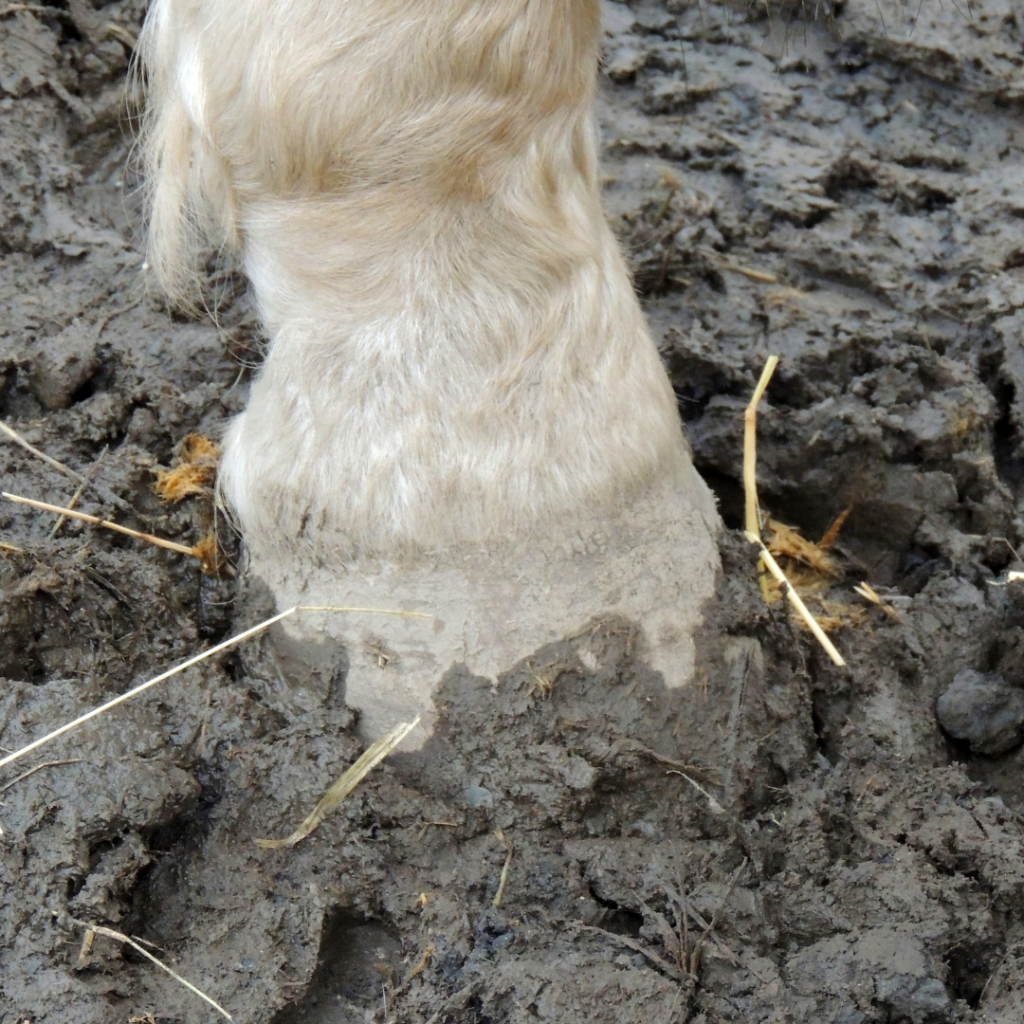
- Thorough intake exam by veterinarian for signs of hoof issues and other conditions that could affect hoof health
- Thorough hoof check by farrier to determine hoof health, the presence of disease, injury, weakness, or concerning overgrowth, and history of improper hoof trimming
- Adherence to an individualized hoof health plan, including routine hoof trimming
- Daily observation for changes in behavior, mobility, and presence of injuries
- Routine living area checks for the presence and removal of foreign objects that could puncture hoof soles
- Daily hoof checks and cleaning, when necessary
- Maintaining a clean living area
- Ensuring that pastures and paddocks have good drainage and residents have access to dry or elevated ground (out of mud or water) during wet weather
- Providing a nutrient-dense, hoof-healthy diet
- Test hay and pastures to ensure resident diets don’t require additional supplementation
Remember that what is normal for one resident isn’t necessarily normal for another. If you have had equine residents without cracks in their hooves or issues when stepping on rocky terrain, it doesn’t mean another resident won’t. Follow the above prevention tips to provide the best care for equine residents and minimize the risk of hoof abscesses. These tips also help prevent other health issues and help equine residents lead happy, healthy lives.
We hope you found this resource helpful. We know you want the best for your residents, and learning about common health issues that affect them is a good way to help ensure their continued well-being! As always, if you have any questions or comments, please reach out, and be on the lookout for more equine health resources!
SOURCES
How To Manage Equine Hoof Abscesses | Western College Of Veterinary Medicine
Equine Hoof Abscesses | Purdue University College Of Veterinary Medicine
Hoof Abscesses In Horses | Merck Veterinary Manual
Hoof Abscesses In Horses | World Horse Welfare
Saw-Horse Stance, Hind Limbs Under & Front Limbs Forward | Horse Vet Side Guide
Cushing’s Disease Threatens The Health Of The Older Horse | Kentucky Equine Research
Tetanus Vaccination Guidelines | American Association Of Equine Practitioners




